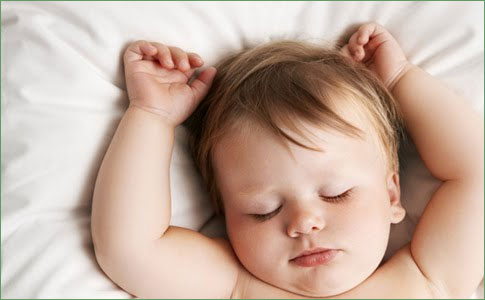Health Centers > Sleep Disorders Overview > Sleep Disorders > Parasomnias
Parasomnias
Parasomnias are disorders characterized by abnormal behavioral or physiological events occurring in association with sleep, specific sleep stages, or sleep-wake transitions. Unlike dyssomnias, parasomnias do not involve abnormalities of the mechanisms generating sleep-wake states, nor of the timing of sleep and wakefulness. Rather, parasomnias represent the activation of physiological systems at inappropriate times during the sleep-wake cycle. In particular, these disorders involve activation of the autonomic nervous system, motor system, or cognitive processes during sleep or sleep-wake transitions. Different parasomnias occur at different times during sleep, and specific parasomnias often occur during specific sleep stages. Individuals with parasomnias usually present with complaints of unusual behavior during sleep rather than complaints of insomnia or excessive daytime sleepiness.
Sleep Disorders
- Introduction- DSM-IV Classification of Sleep Disorders
- Evaluation of Sleep Disorders
- General Principles of Treatment
- Treatment of Specific Sleep Disorders
The parasomnias are characterized by undesirable physical events that disrupt sleep. Parasomnias are subdivided in the ICSD-DCM into disorders of arousal, sleep-wake transition disorders, REM parasomnias, and miscellaneous parasomnias (Table 17-3) (Thorpy 1990). Most of the symptoms are manifestations of central nervous system activation, specifically motor and autonomic discharge. All parasomnias are more common in males than in females, and persons with one type of parasomnia are more likely to manifest symptoms of another. Children with sleep terrors usually sleepwalk when they reach an older age. Positive family histories of parasomnias are common.
This section includes Nightmare Disorder, Sleep Terror Disorder, Sleepwalking Disorder, and Parasomnia Not Otherwise Specified.
- 307.47 Nightmare Disorder (formerly Dream Anxiety Disorder)
- 307.46 Sleep Terror Disorder
- 307.46 Sleepwalking Disorder
- 307.47 Parasomnia Not Otherwise Specified
These disorders are fairly common in children and less so in adults.
Classification & Clinical Findings
A. Sleep Terror
Sleep terror (pavor nocturnus) is an abrupt, terrifying arousal from sleep, usually in preadolescent boys although it may occur in adults as well. It is distinct from sleep panic attacks. Symptoms are fear, sweating, tachycardia, and confusion for several minutes, with amnesia for the event.
B. Nightmares
Nightmares occur during REM sleep; sleep terrors in stage 3 or stage 4 sleep.
C. Sleepwalking
Rapid eye movement (REM) sleep
Rapid eye movement sleep, or REM, is one of the five stages of sleep that most people experience nightly....
Sleepwalking (somnambulism) includes ambulation or other intricate behaviors while still asleep, with amnesia for the event. It affects mostly children aged 6-12 years, and episodes occur during stage 3 or stage 4 sleep in the first third of the night and in REM sleep in the later sleep hours. Sleepwalking in elderly people may be a feature of dementia. Idiosyncratic reactions to drugs (eg, marijuana, alcohol) and medical conditions (eg, partial complex seizures) may be causative factors in adults.
D. Enuresis
Enuresis is involuntary micturition during sleep in a person who usually has voluntary control. Like other parasomnias, it is more common in children, usually in the 3-4 hours after bedtime, but is not limited to a specific stage of sleep. Confusion during the episode and amnesia for the event are common.
Treatment
Treatment for sleep terrors is with benzodiazepines (eg, diazepam, 5-20 mg at bedtime), since it will suppress stage 3 and stage 4 sleep. Somnambulism responds to the same treatment for the same reason, but simple safety measures should not be neglected. Enuresis may respond to imipramine, 50-100 mg at bedtime, although desmopressin nasal spray (an ADH preparation) has increasingly become the treatment of choice for nocturnal enuresis. Behavioral approaches (eg, bells that ring when the pad gets wet) have also been successful.
See Also
- Other Parasomnias
- Parasomnias Usually Associated With REM Sleep
- Nightmare Disorder (formerly Dream Anxiety Disorder)
- Sleep Terror Disorder
- Sleepwalking Disorder
- REM Parasomnias
- Disorders of Arousal
- Sleep-Wake Transition Disorders
- Parasomnia Not Otherwise Specified
- Sleep Terror Disorder and Sleepwalking Disorder
- Primary Sleep Disorders: Parasomnias
- Proposed Sleep Disorders
- Substance-Induced Sleep Disorder
- Parasomnias (Abnormal Arousals)


